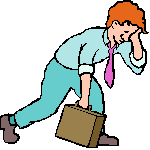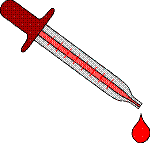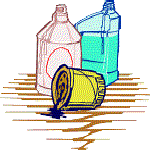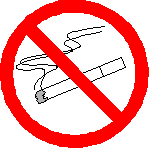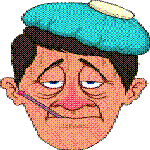Contents
Phobias
Symptoms of Depression
Low Back Pain
Know Your Cholesterol Levels
Safety Tips for Homes with Children
Seeking Treatment for Depression: What to Expect
The Benefits of Aerobic Exercise
What is Panic Disorder?
Advice for Quitting Smoking
Depression Co-Occurring with a Medical Illness
Obsessive Compulsive Disorder Smoking
Key Features of Obsessive- Compulsive Disorder
Obsessive-compulsive disorder (OCD), one of the anxiety disorders, is characterized by several key features starting with obsessions, which are unwanted ideas or impulses that continually well up in the mind of the person with OCD: for example, the persistent fear that harm may come to self or a loved one or an excessive need to do things correctly or perfectly. In response to their obsessions, most people with OCD resort to repetitive behaviors called compulsions, of which washing and checking are the most common.
In many instances, people with OCD show a range of insight from recognizing that their obsessions and compulsions are senseless to strong belief in their validity. Many OCD victims are able to control their symptoms for periods of time. When their resistance weakens they are plagued with shame and secrecy in an attempt to hide their disorder.
OCD can be successfully treated by the use of medication or behavioral therapy or both. Which therapy to use should be decided by the individual patient in consultation with his or her therapist.
Source:The National Institute of Mental Health (NIMH) , a federal agency that supports mental health research.
Phobias
Phobias aren't just extreme fear; they are irrational fear. Phobias occur in several forms: specific phobias, social phobias and agoraphobia.
A specific phobia is a fear of a particular object or situation. For example, dogs, closed-in places, heights, escalators, tunnels, highway driving and flying are a few of the more common fears. Specific phobias strike more than 1 in 10 people and no one knows what causes them, though they seem to run in families and are a little more prevalent in women.
Social phobia is an intense fear of becoming humiliated in social situations. Although this disorder is often thought of as shyness, the two are not the same. The dread of a social event can begin weeks in advance, and symptoms can be quite debilitating.
Agoraphobia, which often accompanies panic disorder, is a fear of being in any situation that might provoke a panic attack, or from which escape might be difficult if one occurred.
If the object of the fear is easy to avoid, people with phobias may not feel the need to seek treatment. Sometimes, though, they may make important career or personal decisions to avoid a phobic situation. About 80% of people who suffer from phobias find relief from their symptoms when treated with therapy and medications.
Source: The National Institute of Mental Health (NIMH) , a federal agency that supports mental health research.
Symptoms of Depression
An estimated one in ten Americans suffer from depression, an illness that affects both physical and mental well-being. Often chronic in nature, depression can be triggered by adverse life circumstances or occur simply "out of the blue." Frequently, a combination of genetic, psychological and environmental factors contribute to the onset of depression.
Fortunately, depression is highly treatable. Years of research have yielded medications and therapies that can relieve most depressive illnesses.
Symptoms of depression include: a sad, discouraged mood; feelings of guilt, emptiness, worthlessness, helplessness; persistent pessimism; loss of interest in work, hobbies, social life, sex; difficulty making decisions; lack of energy; suicidal thoughts; restlessness; disturbed sleep; irritability; changes in appetite or weight; and desolate dreams. While everyone has these symptoms occasionally, anyone experiencing several of them should be professionally evaluated.
If you think you may be suffering from depression, your physician can discuss your symptoms with you and guide you to the appropriate source of treatment.
Source: The National Institute of Mental Health (NIMH) , a federal agency that supports mental health research.
Low Back Pain
The human spine, or backbone, is made up of small bones called vertebrae, that are stacked on top of each other to form a column. The vertebrae are separated by cushions called discs, and are held together by ligaments. Muscles are attached to the vertebrae by bands of tissues called tendons. Openings in the vertebrae form a long hollow canal through which the spinal cord runs down from the base of the brain. Nerves from the spinal cord branch out and leave the spine through the spaces between the vertebrae.
The lower part of the back holds most of the body's weight, so even a minor problem in this area can cause pain when a person stands, bends or moves around. The exact cause of low back problems can be found in very few people. Most times, the symptoms are blamed on poor muscle tone, muscle tension or spasm, ligament or muscle tears, sprains, or joint problems. Sometimes nerves from the spinal cord can be irritated by slipped discs, causing buttock or leg pain.
People at greater risk for low back problems include those who are in poor physical condition, or who do work involving heavy labor or long periods of sitting or standing. Emotional stress and extended periods of inactivity may intensify back pain symptoms.
For back pain that is severe, lasts more than a few days, or keeps you from doing things, a visit to your health care provider is recommended.
Source: The National Institute of Mental Health (NIMH) , a federal agency that supports mental health research.
Know Your Cholesterol Levels
High blood cholesterol is a serious problem: it is a risk factor for heart disease, the number one killer of both men and women in the U.S.
Two specific kinds of blood cholesterol are low density lipoproteins (LDL) and high density lipoproteins (HDL). LDL cholesterol, sometimes called "bad" cholesterol, causes cholesterol to build up in the arteries. Too much LDL in the blood increases the risk of heart disease. In contrast, HDL, or "good" cholesterol helps the body get rid of the cholesterol in the blood, so too little HDL increases heart disease risk.
Accepted guidelines recommend that adults have their cholesterol levels checked at least once every 5 years, to measure total cholesterol as well as LDL and HDL levels. A total cholesterol level of less than 200 mg is desirable, while 240 mg or above is considered high. A reading of 200-239 mg is borderline, and may be treated as high if HDL is low or if other heart disease risk factors are present. HDL should be 35 mg or higher, while LDL should be less than 130 mg.
Factors that influence cholesterol levels include dietary intake of fat and cholesterol, obesity, lack of physical activity, genetic makeup, age and gender. It is best to modify behaviors that can affect these factors whenever possible, by choosing a sensible diet, exercising and maintaining a healthy weight.
Source: The National Institute of Mental Health (NIMH) , a federal agency that supports mental health research.
Safety Tips: Homes with Children
More children die in home accidents than from all childhood diseases combined. Careful supervision is essential. The U.S. Consumer Product Safety Commission offers suggestions for eliminating common household dangers.
Keep medicines, cleaners, paint solvents and other chemicals locked up, out of sight and reach. Keep plastic bags and other materials, which can cause suffocation, away from children. Use safety caps on electrical outlets, and unplug appliances when not in use. Keep children away from open windows; screens may not prevent falling. Don't let children play with toys with small, removable parts, which present a choking hazard. Remove free falling lids from toy chests and other containers.
Nursery equipment must be used carefully as well. Check for sturdy construction and stability, and avoid items with exposed fasteners or sharp edges. Always use safety straps. Never leave a child in a playpen with one side down. Never tie pacifiers or other items around a baby's neck. Don't hang objects with string or elastic near cribs or playpens, and keep them out of reach of drapery and blind cords.
Source: U.S. Consumer Product Safety Commission, an independent Federal regulatory agency,which helps keep American families safe by reducing the risk of injury or death from consumer products.
 Seeking Treatment for Depression
Seeking Treatment for Depression
Treatment for depression should begin with a complete physical and psychological evaluation, reviewing the onset, duration, and severity of your symptoms. You should disclose any alcohol use, drug use or suicidal thoughts. Examination, interviews and lab tests may be used to detect other medical conditions and assess your speech, thought patterns and memory.
Antidepressant medications and psychotherapies are commonly used to treat depression. Recently, two new classes of antidepressants have been introduced which cause fewer side effects: serotonin re-uptake inhibitors and bupropion. Antidepressants have proven to be effective and are not habit-forming. They usually cause only mild, temporary side effects.
Various forms of psychotherapy can relieve depression. Interpersonal therapy focuses on disturbed personal relationships. Cognitive/behavioral therapy explores negative thinking and behavior patterns. Psychodynamic therapy targets internal conflicts thought to be rooted in childhood.
In severe or life-threatening cases, electroconvulsive therapy (ECT) provides an alternative form of treatment.
Source: The National Institute of Mental Health (NIMH) , a federal agency that supports mental health research.
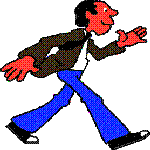 The Benefits of Aerobic Exercise
The Benefits of Aerobic Exercise
Studies show that strenuous physical exertion is no more useful to maintaining fitness than moderate exercise. Walking and other aerobic exercises, done at a pace which makes you breathe a little harder and work up a mild sweat for 30 to 60 minutes, three times a week, will condition your cardiovascular system and strengthen your bones and muscles. Aerobic exercise also helps prevent osteoporosis, slows the buildup of cholesterol plaque in the blood vessels, and improves the functioning of vital internal organs.
Exercise intensity for aerobic conditioning is measured by heart rate. Generally, a good activity level is 70 percent of your maximum heart rate. To calculate this, subtract your age from 220, and multiply that number by .70. However, consult your physician for guidance about your fitness level and the intensity of your exercise program before beginning your workouts.
Dancing, tennis, racquetball, basketball and biking are also good aerobic exercises. Be sure to warm up before and cool down after exercising, and watch for signs of overexertion including dizziness, disorientation, nausea, or pain in the chest, back, left shoulder or left arm.
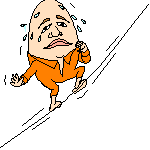 What is Panic Disorder?
What is Panic Disorder?
Researchers estimate that millions of Americans suffer from Panic Disorder, characterized by "panic attacks," episodes of intense fear and frightening physical symptoms that come on suddenly in the absence of any real threat. Often, they withdraw from everyday situations, not knowing what will trigger another panic attack.
Fortunately, proper treatment can usually relieve panic disorder. The National Institute of Mental Health has found psychotherapeutic medications and cognitive-behavioral therapy to be most effective. However, panic disorder often goes undiagnosed for various reasons: its symptoms mimic those of other ailments; people feel embarrassed to seek help; or patients downplay the emotional component of the attacks which are important for an accurate diagnosis.
Symptoms of panic attacks can include: racing heartbeat; chest pain; difficulty breathing; dizziness; nausea; chills or hot flashes; sweating; shaking; tingling or numbness; distorted perception; fear of dying; and a sense of impending doom. If you think you are experiencing panic attacks, see your physician.
Source: The National Institute of Mental Health (NIMH) , a federal agency that supports mental health research.
Advice for Quitting Smoking
The addictive nature of nicotine makes quitting smoking a difficult endeavor. Nicotine causes the brain to release chemicals that perpetuate the desire to smoke. The encouraging news, however, is that half of all people who have ever smoked have successfully quit.
Experts recommend three approaches to quitting, which work best when used together: using nicotine patches or gum; seeking support and encouragement for your efforts; and learning to control the urge to smoke. The patch and gum contain nicotine which passes through the skin, curbing nicotine cravings. They can double your chances of quitting. Support and encouragement can be sought through counseling, support groups, self-help materials, family and friends. Ex-smokers are often the best sources of support. Finally, try to avoid events and activities that trigger the desire to smoke.
Organizations that offer information on how to quit smoking include the American Heart Association, American Cancer Society, American Lung Association, National Cancer Institute, and American College of Obstetrics and Gynecology.
Source: The National Institutes of Health, the principal biomedical and behavioral research agency of the U.S. Department of Health and Human Services.
Depression and Medical Illnesses
Having a physical illness can cause you to feel "down" or sad. But if the sadness is severe or long-lasting, there may be an unrecognized link: clinical depression co-occurring with a medical condition. Clinical depression is estimated to occur in up to one-third of medically ill people.
Depression and medical illness may occur together for different reasons: medical disorders may contribute biologically to depression; ill people may become depressed as a psychological reaction to the prognosis, pain and incapacity caused by the illness; or the two illnesses may be unrelated. Depressive symptoms may also develop as a side effect of medication. It is important to discuss your symptoms with your doctor so that an accurate diagnosis can be made.
Treatment of co-occurring depression can have a positive effect on the course of the medical illness, particularly when it improves a person's ability to manage chronic illness such as diabetes and heart disease. In addition, it can significantly enhance an individual's quality of life.
Source: The National Institute of Mental Health (NIMH) , a federal agency that supports mental health research.
Obsessive Compulsive Disorder
Obsessive-compulsive disorder (OCD) is an anxiety disorder characterized by repetitive thoughts and behaviors that are extremely difficult to overcome. Consider Isobel, an intelligent student failing first period biology because she's always late. She awakens before dawn to get to school on time, but spends three hours showering and repeatedly changing clothes, packs and repacks her books until they're in perfect order, and pauses on each step as she walks downstairs. She rushes to school but misses most of first period.
OCD sufferers are plagued by obsessions, which are unwanted, repetitive thoughts, persistent fears, or a need to do things excessively. They attempt to dispel the anxiety of obsessions with ritualistic behaviors called compulsions. Repeatedly washing, checking things, counting and rearranging objects are common compulsions.
Research indicates that more than two percent of Americans have OCD. Medications classified as serotonin re-uptake inhibitors (SRIs) can successfully treat the disorder. SRIs affect the neurotransmitter serotonin, which supports the theory that OCD has a biological basis.
Source: The National Institute of Mental Health (NIMH) , a federal agency that supports mental health research.



